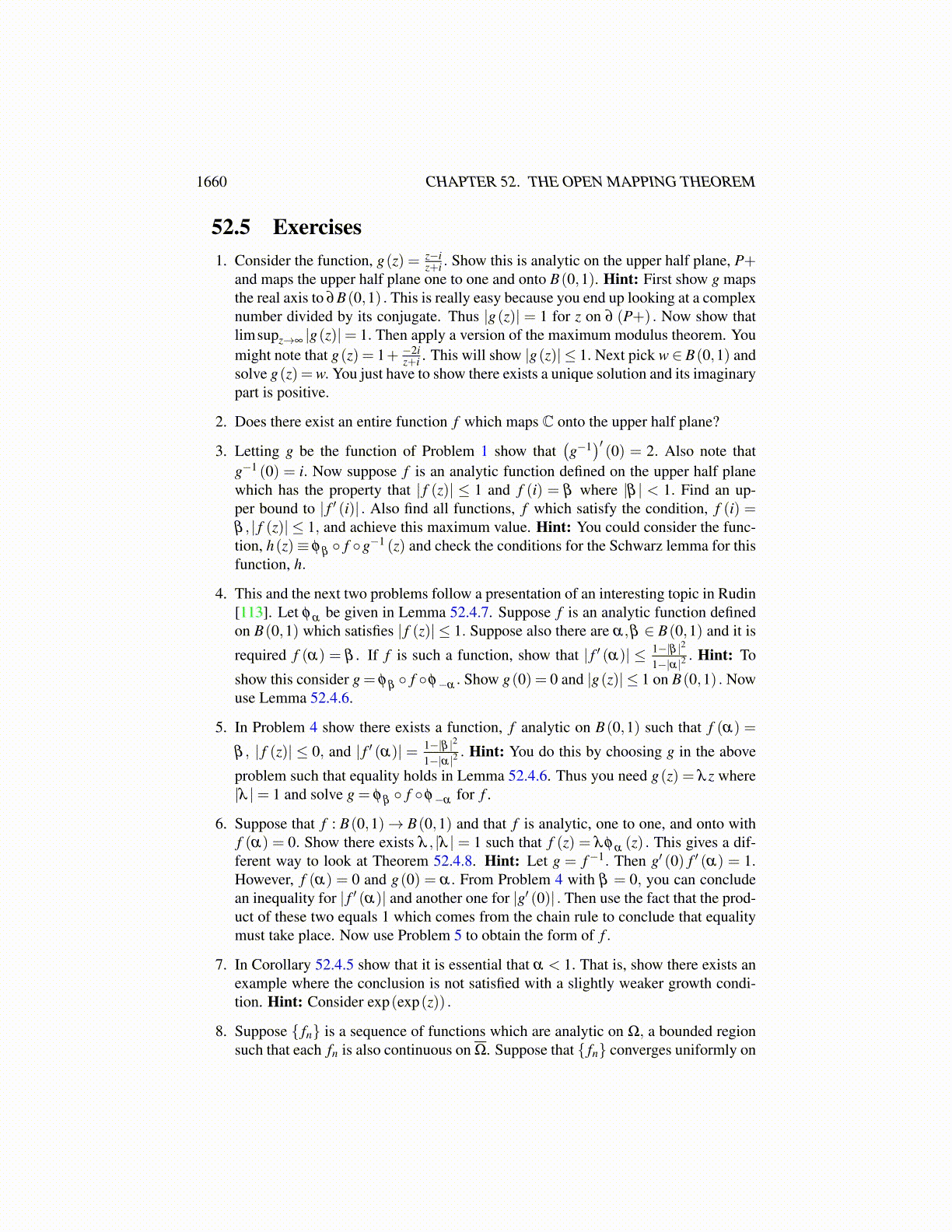
1660 CHAPTER 52. THE OPEN MAPPING THEOREM
52.4.3 Schwarz’s LemmaThis interesting lemma comes from the maximum modulus theorem. It will be used lateras part of the proof of the Riemann mapping theorem.
Lemma 52.4.6 Suppose F : B(0,1)→ B(0,1) , F is analytic, and F (0) = 0. Then for allz ∈ B(0,1) ,
|F (z)| ≤ |z| , (52.4.4)
and ∣∣F ′ (0)∣∣≤ 1. (52.4.5)
If equality holds in 52.4.5 then there exists λ ∈ C with |λ |= 1 and
F (z) = λ z. (52.4.6)
Proof: First note that by assumption, F (z)/z has a removable singularity at 0 if itsvalue at 0 is defined to be F ′ (0) . By the maximum modulus theorem, if |z|< r < 1,∣∣∣∣F (z)
z
∣∣∣∣≤ maxt∈[0,2π]
∣∣F (reit)∣∣
r≤ 1
r.
Then letting r→ 1, ∣∣∣∣F (z)z
∣∣∣∣≤ 1
this shows 52.4.4 and it also verifies 52.4.5 on taking the limit as z→ 0. If equality holds in52.4.5, then |F (z)/z| achieves a maximum at an interior point so F (z)/z equals a constant,λ by the maximum modulus theorem. Since F (z) = λ z, it follows F ′ (0) = λ and so|λ |= 1.
Rudin [113] gives a memorable description of what this lemma says. It says that if ananalytic function maps the unit ball to itself, keeping 0 fixed, then it must do one of twothings, either be a rotation or move all points closer to 0. (This second part follows in case|F ′ (0)|< 1 because in this case, you must have |F (z)| ̸= |z| and so by 52.4.4, |F (z)|< |z|)
52.4.4 One To One Analytic Maps On The Unit BallThe transformation in the next lemma is of fundamental importance.
Lemma 52.4.7 Let α ∈ B(0,1) and define
φ α (z)≡ z−α
1−αz.
Then φ α : B(0,1)→ B(0,1) , φ α : ∂B(0,1)→ ∂B(0,1) , and is one to one and onto. Alsoφ−α = φ
−1α . Also
φ′α (0) = 1−|α|2 , φ
′ (α) =1
1−|α|2.